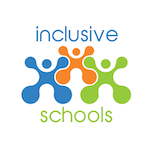The Melbourne Declaration emphasises the importance of knowledge, understanding and skills from each learning area, general capabilities and cross-curriculum priorities as the basis for a curriculum designed to support 21st-century learning. The Australian Curriculum is formed by these three dimensions, and it is the relationship between these dimensions that provides flexibility for schools and teachers to ‘promote personalised learning that aims to fulfil the diverse capabilities of each young Australian’ (MCEETYA, 2008, p. 7).
Teachers can help meet individual learning needs by incorporating specific teaching of the general capabilities or cross-curriculum priorities through the learning area content (for example, teaching targeted literacy skills through a history lesson, providing opportunities to explore sustainability in a science lesson, or scaffolding language specific to mathematics). This process is illustrated in the Student diversity guided tour and in more detail through the Illustrations of personalised learning.
Using the Australian Curriculum to meet the learning needs of all students
Teachers refer to the Australian Curriculum learning area content that aligns with their students’ chronological age as the starting point in planning teaching and learning programs.
Teachers take account of the range of their students’ current levels of learning, strengths, goals and interests, and personalise learning where necessary through adjustments to the teaching and learning program, according to individual learning need, by:
- drawing from learning area content at different levels along the Foundation to Year 10 sequence to personalise age-equivalent learning area content
- using the general capabilities and/or cross-curriculum priorities to adjust the learning focus of the age-equivalent learning area content
- aligning individual learning goals with age-equivalent learning area content
Teachers assess students’ progress through the Australian Curriculum in relation to achievement standards. Some students’ progress will be assessed in relation to their individual learning goals. Approaches to assessment and reporting will differ across the states and territories.

